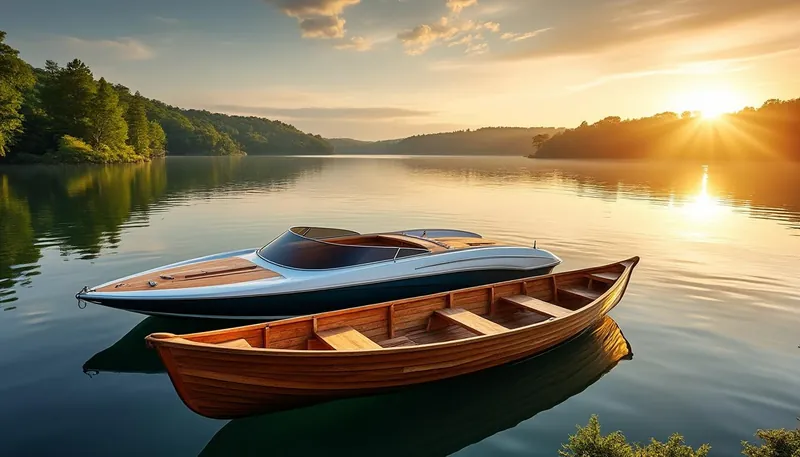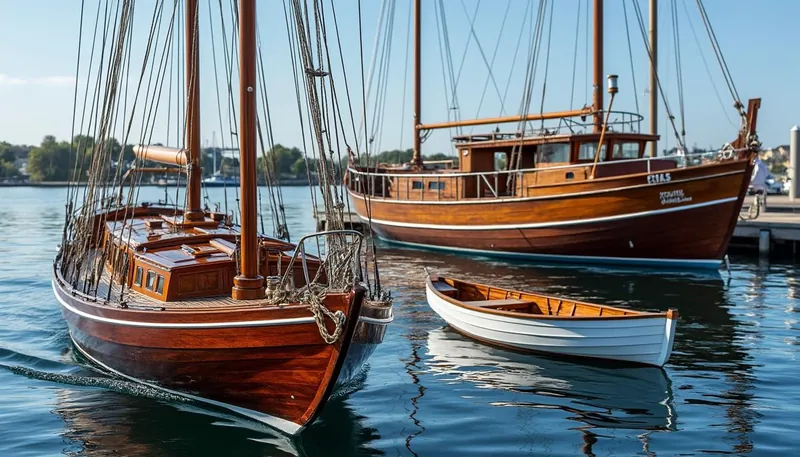In recent years, the environmental impact of our recreational choices has come to the forefront of public discourse. Among the many topics that have garnered attention, the construction materials of boats raises significant questions in relation to eco-friendliness. The rise of wooden boats as a viable option alongside modern boats, typically made from fiberglass and other synthetic materials, calls for a detailed examination of how these two types compare in sustainability. Factors such as carbon emissions, material sourcing, lifecycle assessments, and end-of-life disposal play crucial roles in determining the greener choice. As the 2025 boating season approaches, enthusiasts and casual boaters alike should consider the implications of their choices on the planet.
Understanding the various aspects of boat construction can help in making informed decisions about which type of vessel aligns with eco-friendly values. Moreover, as we delve into this subject, it becomes vital to recognize the work of brands like GreenBoats, which are at the forefront of integrating sustainable practices into boatbuilding. This increasing trend is not merely a fashion statement; it represents a critical shift in the maritime industry towards greener practices. Striking a balance between tradition and innovation, wooden boats are not only attractive and often less harmful to the environment, but they also serve as a conversation starter regarding our collective responsibility towards nature.
Exploring the Materials: Wood vs. Synthetic Fibers
The heart of the debate surrounding wooden boats versus modern boats lies in the materials used for their construction. Traditional wooden boats typically employ timber sourced from sustainably managed forests, presenting eco-friendly attributes because wood is a biodegradable resource. Furthermore, wood absorbs carbon throughout its lifetime, which can significantly offset its environmental impact.
On the other hand, modern boats, especially those made from fiberglass, often entail the use of synthetic materials that contribute to pollution and carbon emissions during both production and disposal. The fiberglass manufacturing process is energy-intensive, frequently relying on non-renewable resources. While certain modern boat manufacturers have made strides in using recycled materials and more sustainable practices, the overall environmental footprint often remains significant compared to wood.
Lifecycle Assessments: Understanding the Environmental Cost
Lifecycle assessments (LCA) are instrumental in evaluating the sustainability of a product from its inception to its end disposal. For wooden boats, studies indicate that the total carbon emissions are reduced by over 50% compared to similar-sized fiberglass boats. This includes emissions from construction, operational use, and the material’s eventual disposal.
Here’s a quick breakdown of key aspects covered by lifecycle assessments:
- 🌳 Material Sourcing – The carbon footprint of harvesting wood versus extracting petroleum for fiberglass.
- 🔧 Manufacturing Processes – Energy use and emissions associated with boatbuilding techniques.
- 🚤 Operational Impact – How fuel consumption varies based on boat design and construction materials.
- ♻️ End-of-Life Disposal – Biodegradability of wood versus the challenges in recycling synthetic materials.
| Aspect | Wooden Boats | Synthetic Boats |
|---|---|---|
| Material Sourcing | Biodegradable, renewable | Non-renewable, fossil fuel-based |
| Carbon Absorption | Absorbs CO2 during growth | Net emissions during production |
| End-of-Life Impact | Biodegrades naturally | Requires landfill or limited recycling |
Wooden Boats and Their Craftsmanship: A Sustainable Tradition
One of the undeniable aspects of wooden boats is the craftsmanship involved in their construction. Many wooden boat builders take pride in the traditional skills passed down through generations, which often include a meticulous attention to detail and a strong respect for the materials. Companies like Spirit Yachts and Hinckley Yachts exemplify how the integration of traditional practices with modern technology creates splendid wooden vessels that are not only beautiful but are also more environmentally sustainable.
Such craftsmanship often results in a longer product lifespan, meaning that these boats can remain in use for several decades if well-maintained. The devotion to building quality wooden boats reduces the need for frequent replacements, effectively lowering the cumulative environmental impact. The beauty of a wooden boat lies not just in its aesthetic but also in its sustainable production.
Sustainability in Design
Interestingly, sustainability in wooden boat design often extends beyond mere materials. Many builders focus on lightweight construction techniques, which can minimize fuel consumption when the boat is in operation. For example, Solaris Yachts leverages both traditional wooden construction methods and contemporary designs to enhance fuel efficiency.
To underline the importance of sustainable design, consider the following points:
- ✨ Streamlined Shapes – Reducing drag for better fuel efficiency.
- 🌞 Solar Integrations – Embracing renewable energy sources, such as solar panels, to power onboard systems.
- 🚀 Advanced Technologies – Using computer-aided design (CAD) to optimize weight while maintaining strength.
The marriage of tradition and modernity in these designs points towards a brighter future for boating, where eco-friendliness is woven into the very fabric of how these vessels are conceived and built.
Modern Innovations: The Shift Towards Electric and Hybrid Solutions
The push for eco-friendly boating extends beyond the choice of materials. Innovations in boat propulsion systems are taking center stage, with electric and hybrid solutions gaining traction in boatbuilding. Electric Boat Company and Silent Yachts are leading the charge, offering electric-powered vessels that significantly reduce emissions and reliance on fossil fuels.
It’s fascinating to note how these developments have influenced the market dynamics. Environmental consciousness among consumers is prompting manufacturers like Arksen and Nordic Boats to explore electric propulsion systems alongside traditional methods. The competition is driving enhancements in battery technology, charging infrastructure, and even in the design of energy-efficient hulls.
Benefits of Electrical Solutions
Shifting to electric or hybrid systems holds tremendous potential for reducing the ecological footprint of boating:
- 🔋 Lower Emissions – Minimal or zero emissions during operation.
- ⚡ Renewable Energy Usage – Ability to harness solar or wind power, reducing dependency on traditional fuels.
- 🚢 Reduced Noise Pollution – Electric boats offer much quieter operation, enhancing the experience for both the crew and marine life.
This evolving landscape indicates a fundamental shift in how we approach boating. While traditional wooden boats hold undeniable charm and sustainability, modern technological advancements are revealing new ways to make marine transportation even greener.
Community and Eco-Conscious Choices in Boating
As boating communities align themselves with sustainability initiatives, the collective awareness of the impact our recreational activities have on the environment is growing. Whether identifying as a sailor, a fisher, or simply an enthusiast, individuals are beginning to advocate for responsible practices both on and off the water.
Organizations and clubs are forming around eco-conscious principles, emphasizing the importance of community involvement in preserving marine environments. Initiatives range from community clean-up events, education on sustainable boating practices, to funding for research into the ecological impacts of recreational boating.
Engagement Strategies for Eco-Friendly Boating
Encouraging a community of eco-conscious boaters can involve various strategies, such as:
- 🌍 Awareness Campaigns – Promoting eco-friendly boating practices through local media.
- 🎉 Events and Gatherings – Organizing community events that celebrate sustainability.
- 🗣️ Education Programs – Offering workshops on sustainable boat maintenance and construction practices.
Such efforts not only foster a deeper connection with the environment but also inspire future generations to prioritize sustainability in their boating endeavors. The conversations initiated here can lead to lasting commitments from the boating community towards a more harmonious relationship with nature.
Are wooden boats really more eco-friendly?
Yes, wooden boats are often made from sustainably sourced materials, allowing them to have a lower carbon footprint compared to fiberglass boats.
What companies are known for sustainable boat designs?
Brands like GreenBoats, Spirit Yachts, Hinckley Yachts, and Electric Boat Company are recognized for their commitment to eco-friendly practices.
How does electric propulsion affect boat emissions?
Electric propulsion drastically reduces emissions during operations, contributing to a cleaner marine environment.
Can wooden boats last longer than modern boats?
With proper maintenance, wooden boats can outlast modern boats, offering a more sustainable long-term option.
What role do communities play in promoting sustainable boating?
Communities can foster eco-conscious practices by organizing events, educational programs, and awareness campaigns focused on sustainability.


